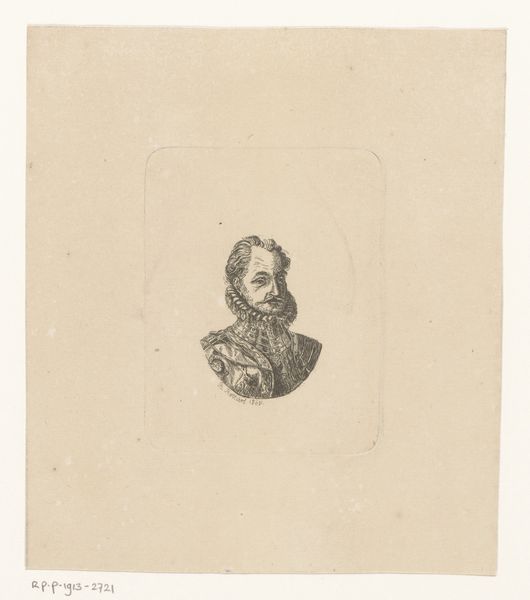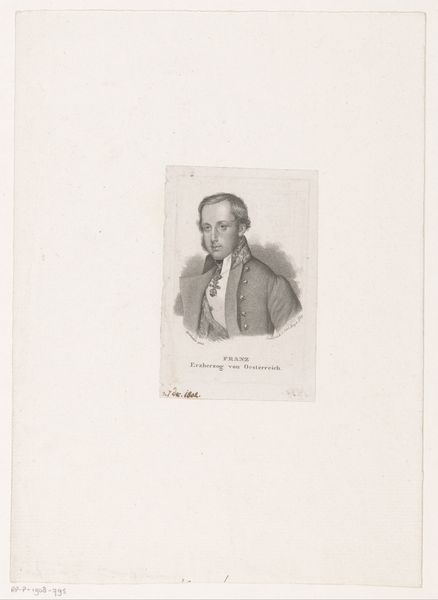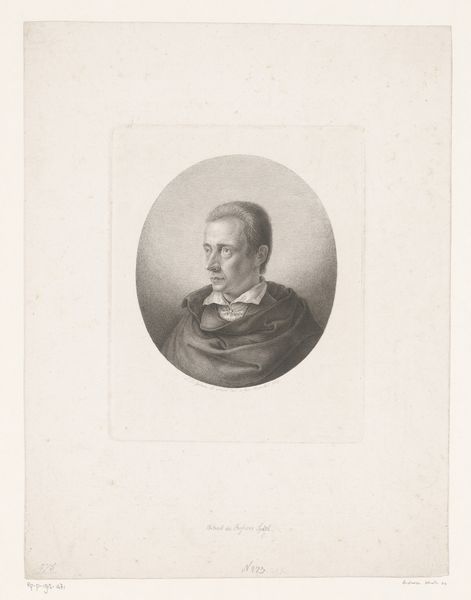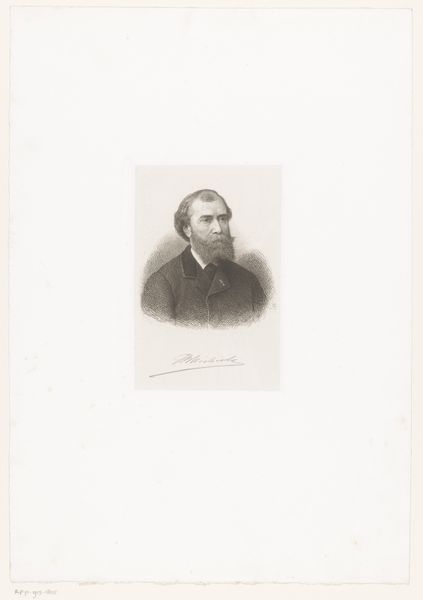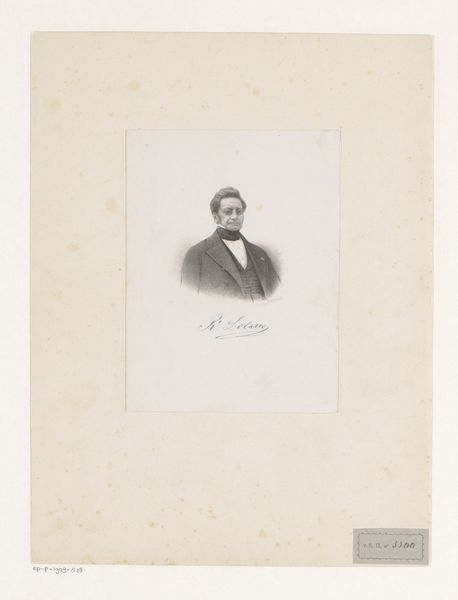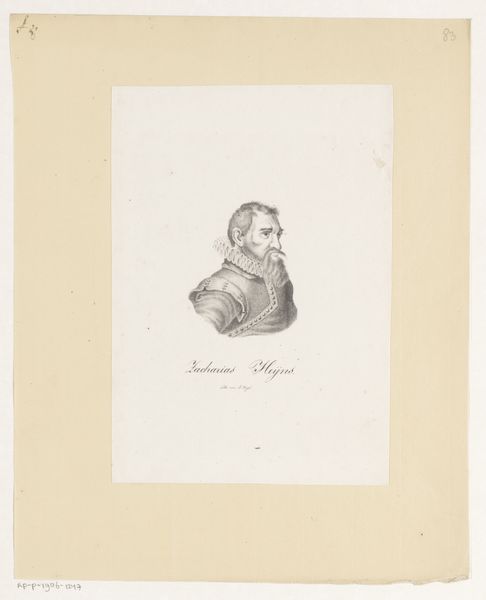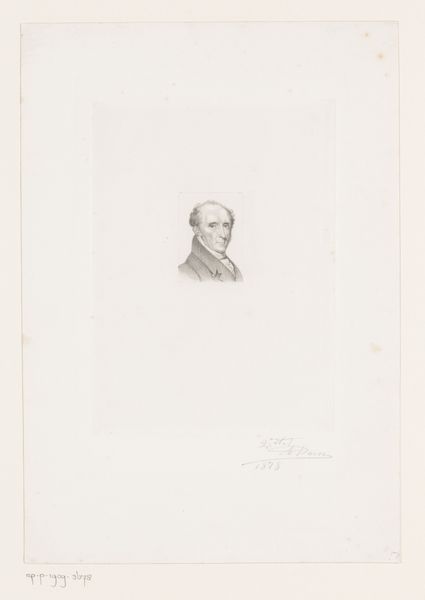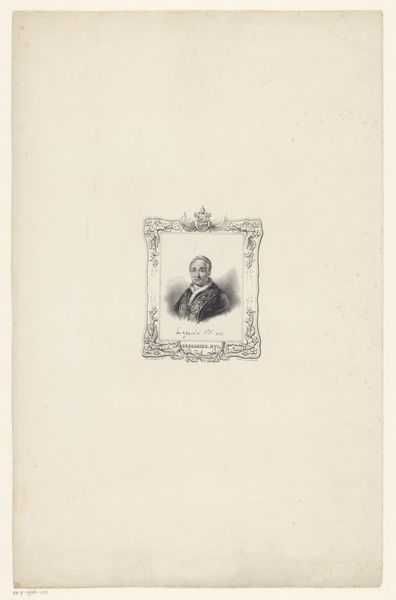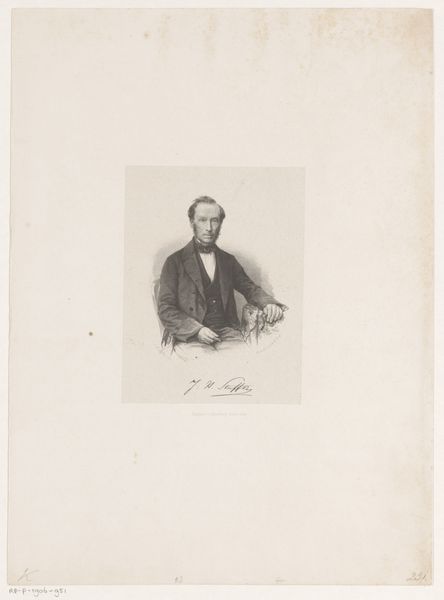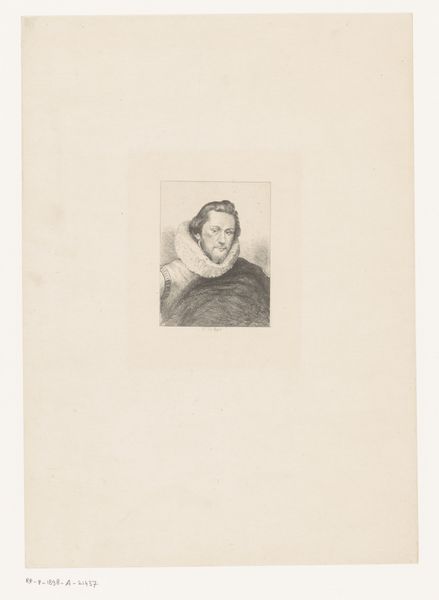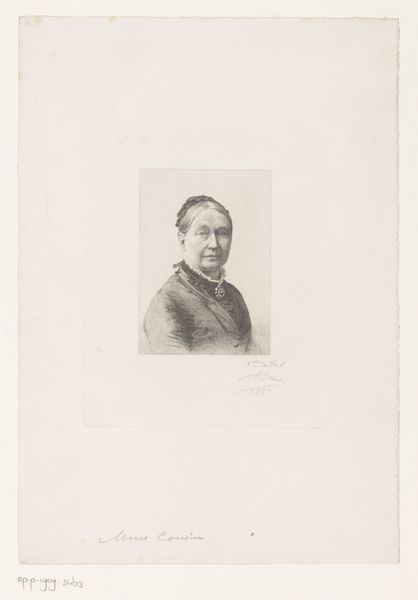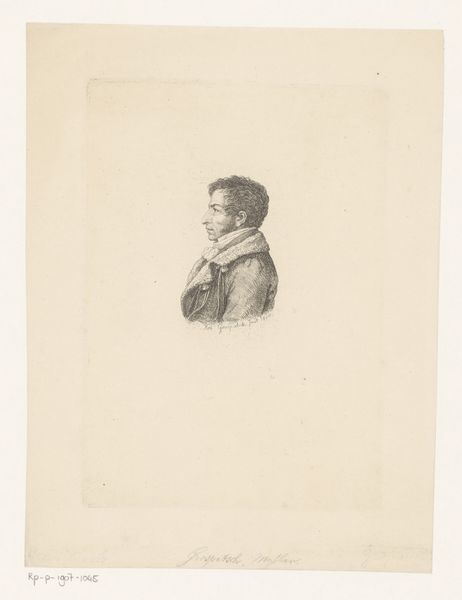
engraving
#
portrait
#
academic-art
#
engraving
#
realism
Dimensions: height 204 mm, width 145 mm
Copyright: Rijks Museum: Open Domain
Curator: Let’s turn our attention to "Portret van Jules van Praet," an engraving likely created between 1831 and 1900, attributed to Jean-Baptiste Meunier. The artwork exemplifies the formal qualities of both realism and academic art, a compelling lens through which to understand 19th-century bourgeois representation. Editor: Oh, he seems very serious! Is it just me, or does this kind of portrait exude a certain… bureaucratic weightiness? He's almost floating there, disembodied against all that white space. Curator: The stark simplicity might underscore the subject’s social standing. Van Praet likely held a position of power or influence; the lack of ostentation emphasizes an inherent authority rather than one displayed through material wealth or extravagant settings. Editor: I guess, in my gut, that minimalist approach feels unsettling. The emptiness magnifies him, but simultaneously isolates. I wonder what he’s thinking, or not thinking— perhaps posing like that suppresses any sense of an inner life? Curator: Indeed, and one could argue that such controlled, seemingly objective representation historically served to reinforce specific societal structures—hierarchies of power and value. The portrait form itself was a tool. Editor: Makes sense. The artist certainly displays mastery over the engraving technique; you can feel the precise control of line. But where is the soul? Was he supposed to express the inner Van Praet? What did the artist leave unsaid, you know? Curator: That's a vital point: these constraints reflect what was deemed proper and acceptable within specific social strata and art institutions. Individual expression took a definite backseat to the desired image of authority. Editor: Yes. Although… I imagine that there's a tiny sparkle of mischief hiding beneath that serious face. He knows exactly what’s happening here. Or am I just being a complete dreamer? Curator: Your "dreaming," as you put it, hints at the potential for resistant readings. To speculate about the repressed interiority within such an apparently straightforward image is vital, isn't it? The portrait becomes a site of contestation rather than passive acceptance. Editor: Beautiful! Now I find I'm making up a whole story for Mr. Van Praet! I see it, thanks.
Comments
No comments
Be the first to comment and join the conversation on the ultimate creative platform.
